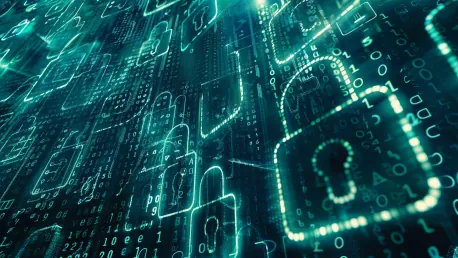The primary subject of analysis in this article is the application of Zero Trust Architecture (ZTA) within the cybersecurity realm, with particular emphasis on extending ZTA to physical security equipment (PSE). By exploring this topic, the article aims to address the increasing necessity to enhance threat response, safety, and overall mission success in both corporate and federal spheres as technological advancements and cyber threats evolve. This comprehensive piece is part of a series featured in Security Technology Executive (STE) and SecurityInfoWatch.com (SIW), highlighting emerging strategies to fill the physical security gaps through Zero Trust principles, especially as the deadlines for Zero Trust implementation approach rapidly. Amidst the fast-paced technological landscape, this exploration into the fusion of physical and cybersecurity stands as a critical discourse in the bid to fortify security measures holistically.
Zero Trust in Cybersecurity
The term “Zero Trust” was coined by John Kindervag in 2010 and is now formalized in the National Institute of Standards and Technology (NIST) Special Publication 800-207. Since then, Zero Trust has gained prominence as a vital framework for cybersecurity. At its core, Zero Trust revolves around seven foundational tenets that converge on the philosophy that no entity, whether internal or external, should be implicitly trusted. Every entity must instead be verified rigorously to ensure security. To be genuinely effective, Zero Trust sanctifies the need for exhaustive policies, binding all users to the same stringent security rules that do not leave room for exceptions or leniency.
The principles of Zero Trust advocate for precise control over resources and data, micro-segmentation, and consistent monitoring, creating a robust defense against both known and unknown threats. While traditional security models often operated under the assumption that threats predominantly came from external sources, Zero Trust challenges this notion by emphasizing that threats can arise from within an organization as well. By rigorously verifying every access attempt and continuously inspecting and logging activities, organizations adopting Zero Trust Architecture aim to significantly decrease their vulnerability to breaches. This paradigm shift necessitates a thorough re-evaluation of existing security postures and the integration of advanced technologies to maintain compliance with the ever-evolving cybersecurity landscape.
Interconnectivity of Physical and Cybersecurity
There is a growing recognition that physical security equipment, which often converges with digital systems, plays a critical role in the broader security landscape. The article explores the vulnerabilities that emerge at the intersections where physical security meets cybersecurity, emphasizing the necessity for a holistic security approach. One of the central themes is the understanding that in modern-day enterprises, cybersecurity cannot be treated in isolation from physical security as gaps in either domain could lead to significant security breaches. Physical security devices such as cameras, access control systems, and sensors are increasingly networked, creating potential entry points for cyber threats if not properly secured.
Moreover, modern cybersecurity challenges are not limited to external threats but also encompass insider risks from disgruntled or malicious employees. This dual threat underscores the importance of robust and unified security measures that cross the boundaries of physical and digital realms. Insider threats often exploit the trust placed in them, leveraging their knowledge of systems and processes to cause harm. Integrating Zero Trust principles into physical security necessitates stringent controls, such as continuous monitoring and granular access management, to mitigate risks posed by internal actors. The interconnectivity of physical and cybersecurity thus demands a unified, cohesive strategy that addresses vulnerabilities holistically, ensuring that security measures are comprehensive and resilient against sophisticated threat vectors.
Technological Advances and Challenges
The discussion extends Zero Trust principles beyond conventional IT environments to the “sensor edge,” i.e., the edge devices like cameras and sensors used in physical security. Prometheus Security Group (PSG) in Austin, Texas, is highlighted for pushing Zero Trust Architecture to the sensor’s edge, securing data from the head-end to the equipment edge with their patented scene authentication technology. This innovative approach ensures that data integrity and authenticity are maintained right from the source, offering a significant enhancement to the security posture of physical security infrastructures. The leap to securing sensor edges is pivotal as these devices often operate in less controlled environments and can be prime targets for cyber threats aiming to exploit weaker links in the security chain.
Historical cyber incidents, such as the 2014 Sony Pictures breach and the 2016 Democratic National Convention attack, are utilized to stress the grave repercussions of inadequate cyber defenses. These incidents underscore the necessity for robust cybersecurity frameworks and the integration of advanced technologies to detect, prevent, and mitigate potential breaches effectively. Furthermore, contemporary examples, including the Russia-Ukraine conflict, illustrate how cyberattacks can soften targets before a physical invasion, demonstrating the strategic importance of robust cybersecurity measures. In modern warfare and geopolitical conflicts, cyberattacks often precede or accompany physical assaults, highlighting the critical need for a fortified, multi-layered defense strategy that encompasses both physical and digital realms to safeguard national and organizational security.
Governance and Policy
Executive Orders such as 14028 (improving the Nation’s Cybersecurity) and 13587 (enhancing insider threat detection) are pivotal in aligning national efforts towards comprehensive Zero Trust implementation. The alignment of these directives is crucial for reinforcing security strategies across both corporate and federal environments. These policies mandate stringent measures to enhance the cybersecurity infrastructure, demanding that organizations adopt a proactive stance in the identification and mitigation of threats. At the heart of these executive orders is the call for improved coordination, information sharing, and the leveraging of technological advancements to bolster the nation’s cyber defenses comprehensively.
The Department of Defense (DoD) is singled out for navigating complex security environments, ensuring that authorized users have secure access to sensitive systems irrespective of their location. By spearheading the implementation of Zero Trust principles, the DoD sets a precedent for other federal and corporate entities, demonstrating the efficacy of a comprehensive, rigorously enforced security framework. This emphasis on ensuring that security controls are both pervasive and adaptable reflects the dynamic nature of modern security challenges, where static, one-size-fits-all approaches are inadequate. Instead, the focus shifts to continuous evaluation and improvement, leveraging advanced technologies and cutting-edge strategies to maintain a robust and resilient security posture that can adapt to emerging threats.
Challenges and Future Directions
Security practitioners are urged to avoid complacency, given the continual advancements in cyber threats. Constant evaluation and adaptation of security measures are necessary. This section delves into the challenges that security professionals face in maintaining pace with the rapidly evolving threat landscape, underscoring the importance of a proactive, dynamic approach to cybersecurity. The potential role of AI in complementing or complicating physical security equipment, especially in areas critical to national security, surfaces as a forward-looking concern. Artificial Intelligence, with its capabilities of advanced pattern recognition, real-time analytics, and automated response, presents both opportunities and challenges in the realm of security. While AI can significantly enhance threat detection and response capabilities, there are also concerns about its potential misuse and the complexities it introduces in terms of security management.
The relationship between AI, Zero Trust, and mission response is identified as an area necessitating further exploration. As organizations increasingly incorporate AI and machine learning technologies into their security infrastructures, understanding how these technologies interface with Zero Trust principles becomes critical. The aim is to leverage the strengths of AI in enhancing security measures while ensuring that the foundational principles of Zero Trust are uncompromised. Questions about the ethical use of AI, the management of AI-driven systems, and the prevention of AI exploitation by adversaries are pivotal topics that demand thorough investigation and dialogue among security practitioners, policymakers, and technologists.
Unified Security Approach
The article consistently underscores the need for a unified approach that integrates both physical and cybersecurity measures. It argues that isolationist strategies that treat physical and digital security as separate entities are inherently flawed and susceptible to breaches. There is a consensus that Zero Trust principles, though foundational, require comprehensive policy support to ensure efficacy across all security domains. This integrated approach demands that policies, technologies, and operational practices converge to form a cohesive security framework that leaves no gaps that could be exploited by threat actors.
The edge is continuously being redefined, pushing the boundaries from server rooms to physical security devices, necessitating a reevaluation of security paradigms. A trend is evident towards securing data right at the source, such as sensors and cameras, to thwart advanced and evolving cyber threats. As technological advancements push the periphery of security infrastructures to more distributed and diverse environments, the challenge becomes ensuring that security measures are equally robust and effective across all points. This paradigm shift necessitates the adoption of advanced security technologies, continuous monitoring, and adaptive policies that can respond to the fluid nature of modern security threats.
Strategic Importance of Cybersecurity
There is an increasing awareness that physical security equipment, which often integrates with digital systems, is crucial in the overall security framework. The discussion highlights the vulnerabilities that arise when physical security intersects with cybersecurity, stressing the need for a holistic security approach. A key point is that in today’s enterprises, cybersecurity cannot be considered separately from physical security, as weaknesses in either area can lead to major security incidents. Physical security devices like cameras, access control systems, and sensors are now networked, making them potential targets for cyber attacks if not adequately protected.
Additionally, modern cybersecurity threats include not only external attackers but also insider risks from disgruntled or malicious employees. This dual threat highlights the necessity for robust and unified security measures that span both physical and digital realms. Insider threats often abuse the trust given to them, using their insider knowledge to inflict harm. Adopting Zero Trust principles in physical security is critical, requiring strict controls such as continuous monitoring and detailed access management to counteract risks from internal actors. The integration of physical and cybersecurity calls for a unified, cohesive strategy that holistically addresses vulnerabilities, ensuring that security measures are thorough and resilient against sophisticated threat vectors.









